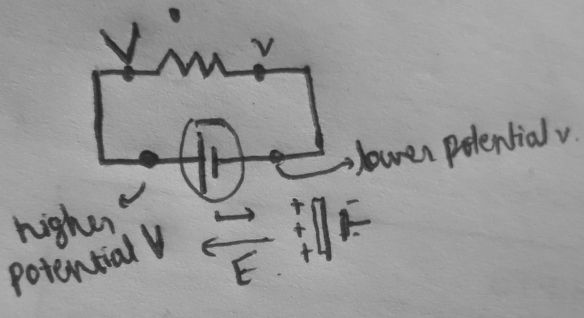We say a potential difference moves charges in a resistor.. i want to understand it in terms of field. What charge distribution produces a field in the resistor? True, the cell produces a field.. but it's in the direction along its terminals not across the resistor.
Its all well to say there a difference in potential across the resistor.

